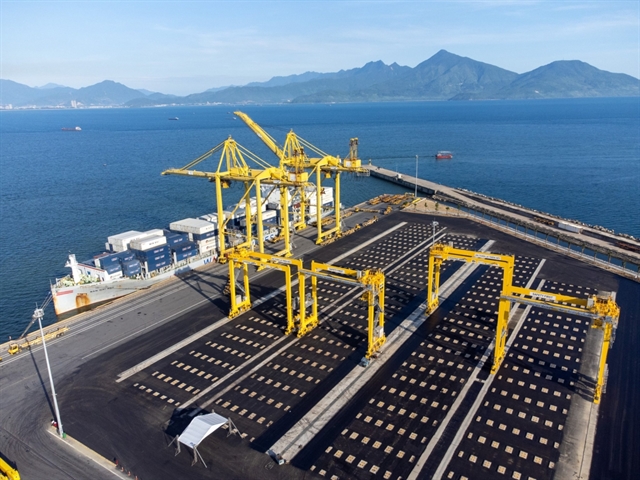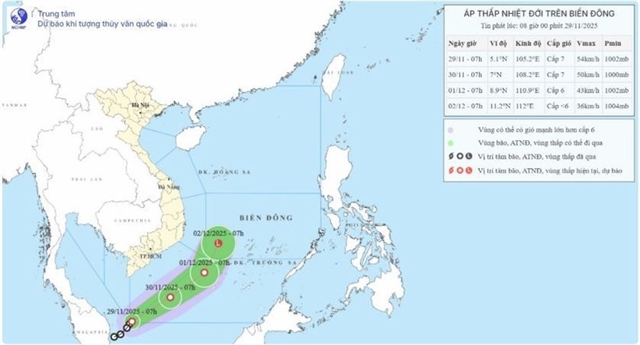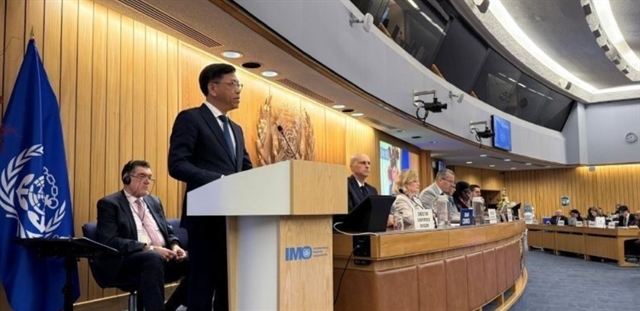 Economy
Economy


|
| Favorable location brings great competitive advantage to Vietnamese seaports. — VNA/VNS Photo |
HÀ NỘI — Deputy Prime Minister Bùi Thanh Sơn has signed a decision approving the Việt Nam Logistics Services Development Strategy for 2025–2035 period, with a vision to 2050, which aims to build a sustainable, efficient, and high value-added logistics sector with strong competitiveness, leveraging Vietnam’s advantages in global supply and value chains.
In the period, the added value of logistics services is set to account for 5–7 per cent of the country’s GDP, with an average annual growth rate of 12–15 per cent. The strategy seeks to raise the outsourcing rate of logistics services to 70–80 per cent and reduce logistics costs to around 12–15 per cent of GDP.
Việt Nam aims to rank among the world’s top 40 countries and territories in the World Bank’s Logistics Performance Index (LPI). Meanwhile, 80 per cent of logistics enterprises are expected to adopt digital transformation solutions.
The logistics sector will pursue low-emission growth and green energy transition.
By 2035, 70 per cent of its workforce will be professionally trained, including 30 per cent with university degrees. At least five modern and world-class logistics centres will be established as key hubs linking regional and global supply chains.
By 2050, logistics services will make up 7–9 per cent of GDP and grow 10–12 per cent annually, while the outsourcing rate of logistics services is targeted increasing to 80–90 per cent, and logistics costs will drop to 10–12 per cent of GDP.
Additionally, Việt Nam aims to rank among the world’s top 30 in the World Bank’s LPI. All Vietnamese logistics enterprises are expected to apply digital transformation solutions.
The industry is expected to develop efficiently toward low emissions, contributing to the national net-zero goal. The strategy also sets to develop at least 10 modern logistics service centres of international standard, which will act as a hub for connection with regional and global supply chains.
The strategy sketches out orientations to create breakthroughs in finalising the legal and institutional framework to improve the business environment, encourage all economic sectors to join logistics development, promote international integration, and strengthen state management and law enforcement in the logistics sector in line with market mechanisms and international law and practices
Other goals include promoting investment in modern and synchronised logistics infrastructure, especially transport, trade, and digital infrastructure, while ensuring environmental protection, disaster prevention, and climate resilience. The strategy also seeks to strengthen linkages across sectors, regions, and international partners; develop logistics markets and supply sources for sustainable growth; improve business competitiveness; and promote green and high-quality logistics services based on digital platforms. It further emphasises the need to promote research, innovation, and the application of advanced technologies to boost logistics efficiency in production, trade, and domestic and international distribution.
Attention will be paid to developing high-quality logistics human resources; enhancing the role of industry associations and pioneer enterprises; forming modern supply chains; and expanding value-added logistics services to meet domestic and international demand, towards positioning Vietnam as a global transshipment and distribution hub.
The strategy also aims to develop free trade zones linked to seaports, airports, border gates, and key production areas; modern hubs for sorting and processing e-commerce goods to handle large volumes efficiently and safely using advanced technology; logistics parks, distribution centres, smart warehouses, and specialised storage facilities for agricultural products, chemicals, industrial goods, and processed products.
Urban logistics models will be developed in major cities to ensure efficient, cost-effective, and environmentally friendly goods circulation. — VNS




